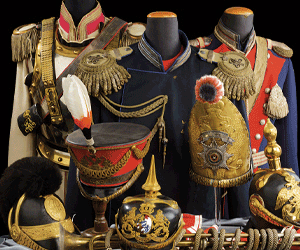Reichsbahn Bahnschutz Oberabteilungsführer Collar Tabs
SKU: 72.GOR.03.02.02.03.006
Estimated market value:

Estimated market value:
Attributes
History
The Deutsche Reichsbahn (German National Railway) was created after the First World War in 1920 by combining the formerly independent state railways of the abolished German Empire into a national organisation. Under NSDAP rule, the German state railway system was reorganised in the 1930s to better meet the needs of the economy and to prepare for war, eventually supplying the front lines with soldiers and supplies. The Reichsbahn also had an infamous role to play in the Holocaust, transporting Jews and other “undesirables” to concentration and extermination camps.
The Bahnschutzpolizei (railway protection police) was founded in 1939 as a merger of the Bahnpolizei (railway police) and the Reichsbahnschutz (railway protection force), the latter being regular railway employees that, beyond their normal functions, additionally served as railway security personnel.
The Bahnschutzpolizei as a railway sub-organisation was made up of policemen that were employed by the Reichsbahn rather than the German police force. Their task was to ensure railway safety as well as preventing railway-related espionage and sabotage. During the war, most members of the Bahnschutzpolizei served in the occupied Eastern European territories.
Bahnschutz collar tabs were introduced around 1936/1937 to distinguish Bahnschutz personnel from Bahnpolizei/Streifdienst (patrol service) members. They feature silver-coloured cyphers and/or rank pips on black with silver-coloured piping. Rank pips are in the shape of four-sided stars and made of metal. Except for the highest rank, all rank names feature the prefix “Bahnschutz-” or “Bz-”.
The collar tabs are as follows:
Stabsführer im Reichsverkehrsministerium wore two embroidered oak leaves and one rank pip.
Bezirkshauptführer wore two embroidered oak leaves.
Bezirksführer wore one embroidered oak leaf and one rank pip.
Stellvertretende Bezirksführer wore one embroidered oak leaf.
Abteilungshauptführer wore four rank pips and one band of tress at the bottom.
Oberabteilungsführer wore four rank pips.
Obermusikzugführer wore three rank pips and one band of tress at the bottom.
Abteilungsführer wore three rank pips.
Oberzugführer wore two rank pips and two bands of tress at the bottom.
Zugführer wore two rank pips.
Unterzugführer wore one rank pip and one band of tress at the bottom.
Gruppenführer wore one rank pip.
Bahnschutz-Männer wore one band of tress at the bottom.
Anwärter wore plain collar tabs.


Comments
Sign in to comment and reply.


Scroll Top